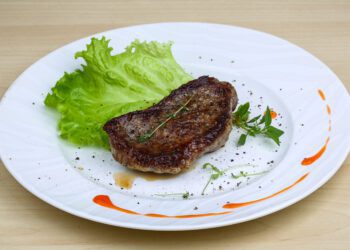Growing meat in space could help increase the duration and self-sufficiency of missions
Development of cultivated meat, i.e. actual animal meat that’s grown in bioreactors from stem cells, has been gaining traction in recent years. That’s because it can provide a more sustainable and ethical alternative that doesn’t only mitigate animal slaughter, but also uses far less natural resources than traditional livestock farming. Notably, it also shows potential to sustain life in space.
Over the past year, the European Space Agency (ESA) has been exploring whether cultivated meat can be a viable food option in space, used as a protein source that can be produced in situ.

“The focus is to provide astronauts with nutritious food during long-term missions far from Earth, overcoming the typical two-year shelf-life of traditional packaged supplies,” explained ESA engineer Paolo Corradi. “Given the limited resources in space, growing fresh food in situ would be necessary to increase the resilience and self-sufficiency of a mission, and could also provide psychological support to the crew.”
To test the meat production alternative, ESA funded two independent research projects — one run by Germany’s space biotech startup Yuri and Reutlingen University; and the other conducted by a trio of UK companies, Kayser Space, Cellular Agriculture, and Campden BRI.
The two teams compared the nutritional value of cultivated meat to current protein sources studied in space, including plants and algae. They suggested different meat production methods and bioreactor technologies.

Their results, published on Monday, show that the technology is promising, even though it still requires significant research and work before space cultivated meat can reach astronauts’ palates.
** Click here to read the full-text **











